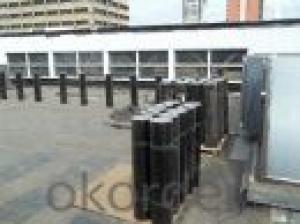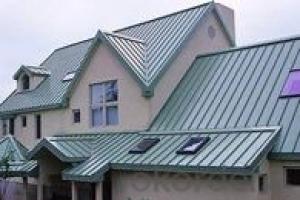3mm SBS Bitumen Waterproof Membrane for Roof
- Loading Port:
- Shanghai
- Payment Terms:
- TT or LC
- Min Order Qty:
- 1000 m²
- Supply Capability:
- 200000 m²/month
OKorder Service Pledge
OKorder Financial Service
You Might Also Like
Product description
The 3mm SBS Bitumen Waterproof Membrane for Roof are made by soaking the base in bitumen, or thermoplastic elastomer(Such as styrene butadiene-SBS),or thermoplastics(Such as atactic polypropylene-APP,APAO,APAL)modified bitumen, then covering double faces with elastomer(SBS)or thermoplastics(APP,APAO,APAL)modified bitumen, and last finishing the upward face with fine sands, mineral flakes(or Grains) or polythene membrane etc. while downward face with fine sands or polythene membrane.
Packaging & Shipping
Package and transportation-- SBS waterproof membrane / APP waterproof membrane / Asphalt waterproof membrane for building waterproofing construction :
1. Torch on bitumen membrane sheets 4mm should be stored under dry and ventilated conditions.
2. Different types of membranes must be piled separately.
3. Under usual condition, storage period is one year since production date.
4. Membrane roll should be put vertically during transportation. It should be kept away from sunshine and rainwater.
.
CHARACTERISTICS:
It has good waterproofing and ageing-resistance function, not flowing at highest temperature and no crack at lowest temperature;
Easy application , no pollution, and long service life etc.
Applicable scope:
It is widely used for industry and civil building --- the waterproof and dampproof of the roofs, basements, toilets etc; and the waterproofing of bridges, parking area, tunnels, reservoir etc.
SBS modified bitumen waterproof membrane is specially suitable to the building waterproofing in cold area and to the buildings of changeable constructions while APP specially suitable to areas of high temperature and of strong sunshine.
Storage:
Different types or specifications of products should be separated, not mixed.
Keep it dry and ventilated, protected from the sun or rain.
Storage temperature should never be higher than 45 °C. Pile up the membranes flatwise whose stockpile height never exceeds five layers. One layer is guaranteed if it is placed vertically.
Prevent it from inclination or In the process of transportation, it should be lying in case of inclination or lateral pressure. If necessary, cover it with felt-cloth.
Storage time is at least one year from manufacture date on if the product is under normal operation of storage.
Technical Parameters
Item | Index | ||||||
1 | Thickness of resin layer of the middle fabric ,mm≥ | - | - | 0.40 | 0.40 | 0.40 | |
2 | Tensile performance | Max tensile strength,N/cm ≥ | - | 120 | 250 | - | 120 |
Tensile strength,NPa ≥ | 10 | - | -10 | - | - | ||
Max elongation% ≥ | - | - | 15 | - | - | ||
Breaking elongation % ≥ | 200 | 150 | - | 200 | 100 | ||
3 | Heat treatment size change rate%≤ | 2.0 | 1.0 | 0.5 | 0.1 | 0.1 | |
4 | Cold bonding | -25°c No cracks | |||||
5 | Watertightness | 0.3mPa,2h waterproof | |||||
product show
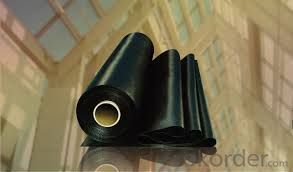
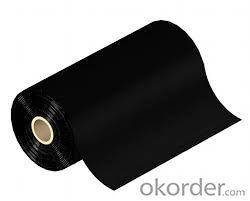
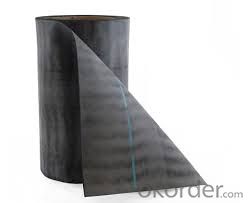
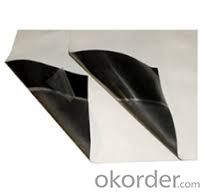




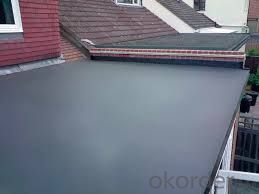
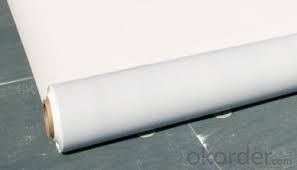
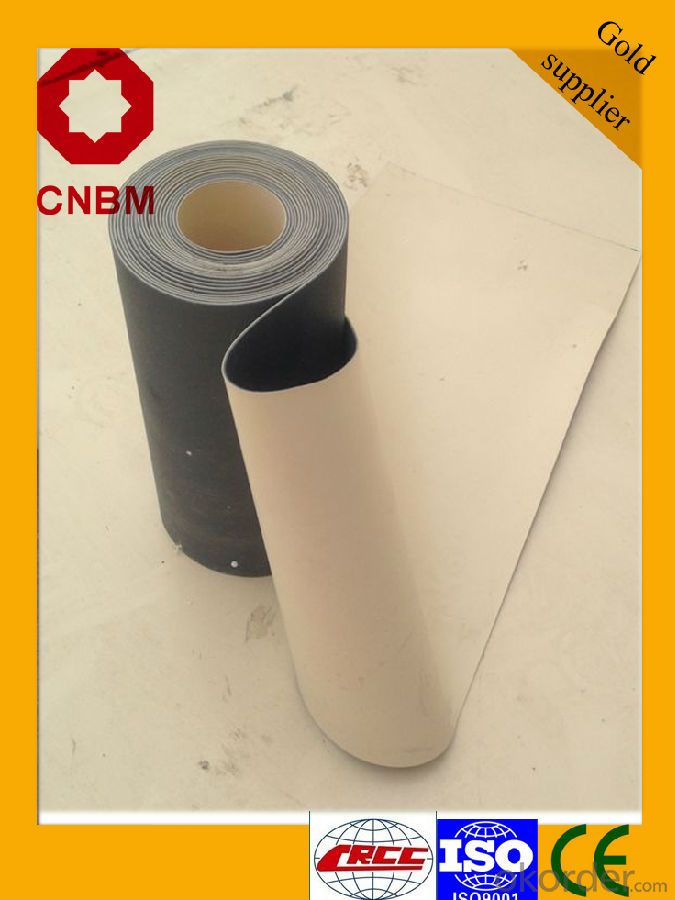
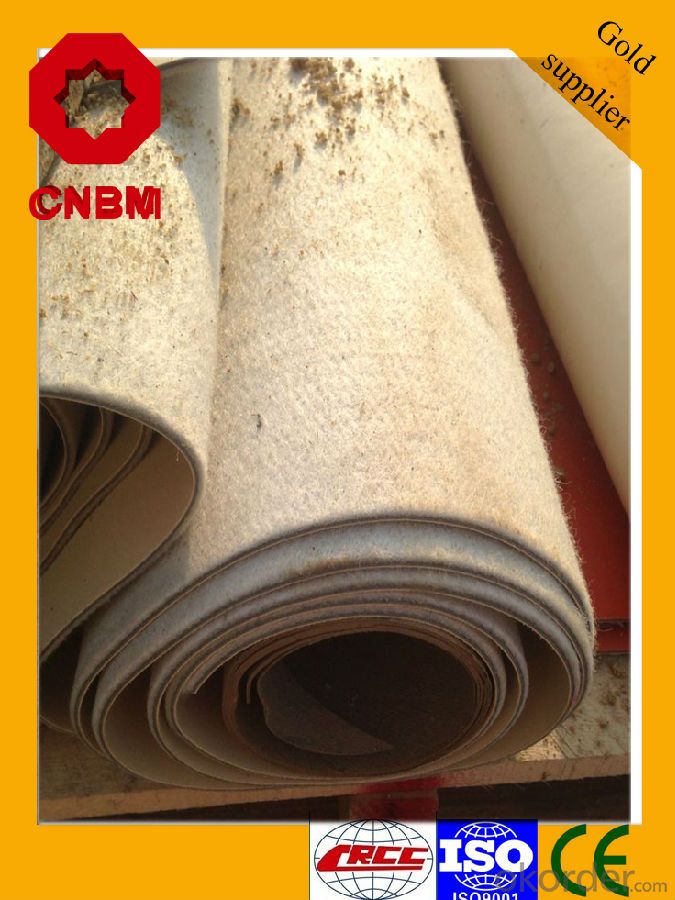
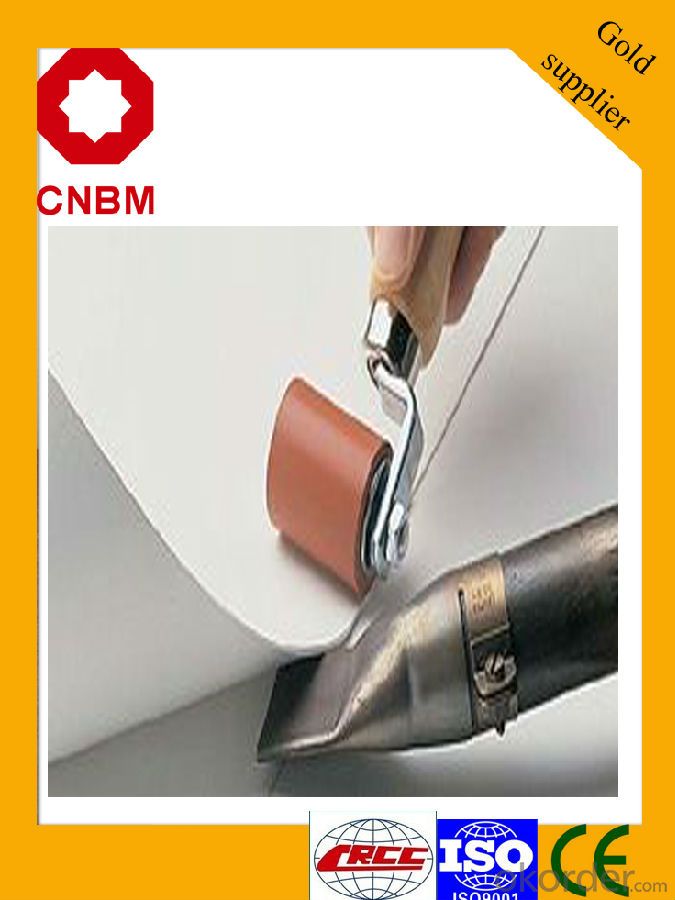

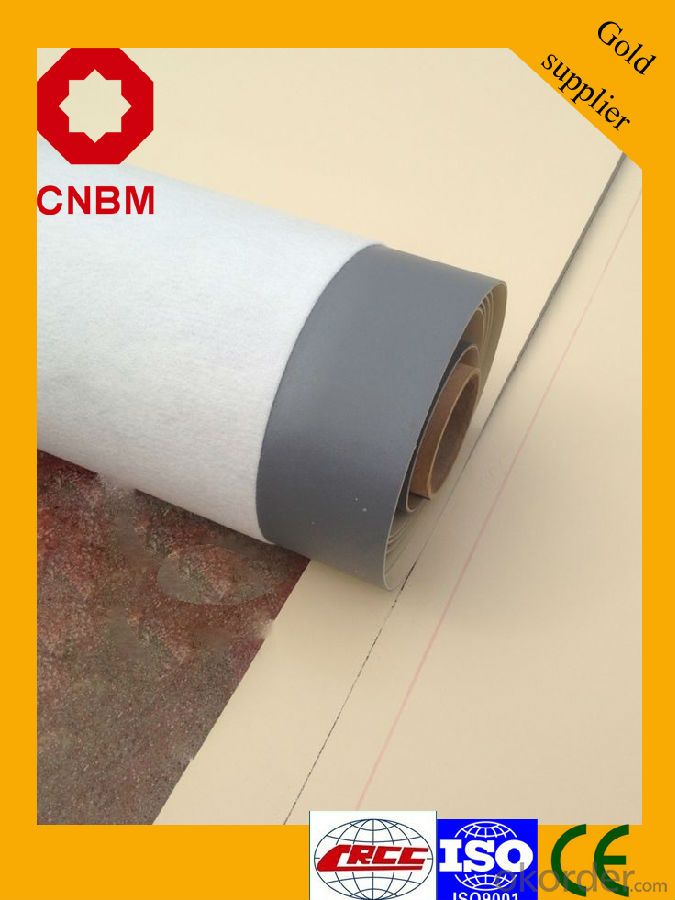
FAQ
Q: What's the de6abf1fe186f8d58506cbcfe46eed814d.jpglivery time ?
A: 3-5 days for 1-600 rolls, 10-15 days for container.
Q: What's the payment terms ?
A: TT/LC
Q: How do you make replacement with quality problems ?
A: New replacement will be packed into your next order or send to you directly after receive video or photo about quality problems.
- Q:Are waterproofing membranes suitable for high-traffic areas?
- Yes, waterproofing membranes are suitable for high-traffic areas. Waterproofing membranes are designed to provide a protective barrier against water infiltration, preventing water damage and maintaining the integrity of the structure. High-traffic areas, such as walkways, driveways, parking lots, and other heavily used spaces, are prone to constant exposure to water, which can lead to structural damage and deterioration over time. By applying a waterproofing membrane, these areas can be effectively protected from water intrusion, ensuring their durability and longevity. Additionally, waterproofing membranes are often designed to be slip-resistant, providing an added safety feature in high-traffic areas. Therefore, using waterproofing membranes in high-traffic areas is a wise choice to mitigate water-related issues and maintain the structural integrity of the space while ensuring the safety of occupants.
- Q:Can a waterproofing membrane be used for plant rooms?
- Yes, a waterproofing membrane can be used for plant rooms. Plant rooms often house machinery and equipment that require protection from water and moisture. Using a waterproofing membrane can help prevent water damage to the plant room and the equipment inside. It creates a protective barrier that keeps water from penetrating the walls, floors, and ceilings of the plant room. This can be especially important in areas where there is a higher risk of water leaks or condensation. Waterproofing membranes are designed to withstand various environmental conditions and can provide long-lasting protection for plant rooms.
- Q:Does a waterproofing membrane require any curing time before it can be exposed to water?
- Before being exposed to water, a waterproofing membrane does require a curing time. This curing time is necessary for the membrane to fully bond and reach its maximum strength, durability, and waterproofing capabilities. The specific duration of the curing time may vary depending on the type of membrane and the instructions provided by the manufacturer. To ensure proper curing and effective protection against water intrusion, it is crucial to adhere to these instructions. Neglecting to allow sufficient curing time can compromise the membrane's effectiveness, potentially resulting in leaks or other related issues. Therefore, it is highly recommended to wait until the specified curing time has passed before exposing the waterproofing membrane to water.
- Q:Does a waterproofing membrane require any special precautions during storage?
- Yes, a waterproofing membrane requires special precautions during storage. It should be stored in a dry, cool, and well-ventilated area, away from direct sunlight and extreme temperatures. It should be kept in its original packaging or wrapped properly to prevent any damage or exposure to moisture. Additionally, it is important to avoid storing it near any sharp objects or chemicals that could potentially cause punctures or degradation of the membrane. Regular inspection and rotation of stock is also recommended to ensure the membrane remains in optimum condition.
- Q:How does a waterproofing membrane handle freeze-thaw cycles?
- A waterproofing membrane is designed to withstand freeze-thaw cycles by having specific properties that enable it to expand and contract without compromising its integrity. Freeze-thaw cycles occur when water penetrates the membrane and freezes during colder temperatures, causing it to expand. As the ice melts during warmer temperatures, the membrane should have the ability to contract back to its original state. To handle freeze-thaw cycles, a waterproofing membrane typically possesses elasticity and flexibility, allowing it to accommodate the expansion and contraction without cracking or breaking. It may also have a low water absorption rate to prevent water from seeping into the membrane. Additionally, the membrane should have excellent adhesion to the substrate to ensure it remains in place during temperature fluctuations. Some waterproofing membranes incorporate special additives or technology to enhance their freeze-thaw resistance. These additives may include polymers or elastomers that improve the membrane's ability to withstand extreme temperature changes. Moreover, some membranes have reinforced layers or fabric inserts that provide additional strength and durability, helping them better handle freeze-thaw cycles. Overall, a well-designed waterproofing membrane should be able to handle freeze-thaw cycles effectively by being elastic, flexible, resistant to water absorption, and strongly adhered to the substrate. This ensures the membrane's longevity and prevents water infiltration, protecting structures from potential damage caused by freeze-thaw cycles.
- Q:Can a waterproofing membrane be used on retaining walls?
- Yes, a waterproofing membrane can be used on retaining walls. Retaining walls are often exposed to moisture and hydrostatic pressure, which can lead to water infiltration and deterioration of the structure. Applying a waterproofing membrane on the retaining wall can help prevent water penetration, protect the wall from moisture-related damage, and prolong its lifespan. The membrane acts as a barrier, preventing water from seeping into the wall and causing potential issues such as efflorescence, cracks, or erosion. It is important to choose a waterproofing membrane that is specifically designed for below-grade applications and is capable of withstanding the pressure exerted by the retained soil. Additionally, proper installation techniques and appropriate drainage systems should be considered to ensure the effectiveness of the waterproofing membrane on retaining walls.
- Q:Can a waterproofing membrane improve energy efficiency?
- Yes, a waterproofing membrane can improve energy efficiency. A waterproofing membrane acts as a barrier against moisture intrusion, preventing water from seeping into the building envelope. By keeping the structure dry, it helps to prevent the growth of mold and mildew, which can contribute to poor indoor air quality and the deterioration of building materials. In addition to protecting against moisture, a waterproofing membrane can also provide insulation benefits. Many waterproofing membranes are designed to have a high thermal resistance, or R-value. This means that they can provide an extra layer of insulation to the building, reducing heat transfer through the walls or roof. By improving the building's thermal performance, a waterproofing membrane can help to reduce the load on heating and cooling systems, resulting in energy savings and improved energy efficiency. Furthermore, a waterproofing membrane can also help to reduce air leakage in a building. Air leakage can account for a significant amount of energy loss, as conditioned air escapes through gaps and cracks in the building envelope. By sealing off these areas, a waterproofing membrane can help to improve the building's air tightness, reducing energy loss and improving energy efficiency. Overall, a waterproofing membrane can play a crucial role in improving energy efficiency by preventing moisture intrusion, providing additional insulation, and reducing air leakage. Investing in a high-quality waterproofing system can lead to long-term energy savings, improved indoor comfort, and a more sustainable and efficient building.
- Q:Waterproof building materials after the construction of drums, bubble is what reason?
- Reason 3: synthetic polymer waterproofing membrane construction, if the adhesive is not fully dry on the eager to paving the membrane, resulting in a solvent residue in the coil inside, when it evaporates, it will form a bubble. Control measures: the use of cold and cold method of paving, the brushing of the adhesive to be uniform, to be dry when the handle (refers to touch) is not bonded, before paving the membrane, while compaction. In particular, to prevent the accumulation of adhesive too thick, dry operation caused by the film from the drum.
- Q:Can a waterproofing membrane be used on both interior and exterior surfaces of a structure?
- Yes, a waterproofing membrane can be used on both interior and exterior surfaces of a structure. Waterproofing membranes are designed to create a barrier that prevents water or moisture from penetrating into the structure, whether it is applied on the inside or outside. On the interior, a waterproofing membrane can be used to protect basements, crawl spaces, or other areas prone to moisture intrusion. This helps to prevent water damage, mold growth, and other issues that can arise from excess moisture in these spaces. On the exterior, a waterproofing membrane is commonly used to protect the foundation, walls, and other structural elements from water infiltration. This is especially important in areas with heavy rainfall or where the water table is high. By applying a waterproofing membrane on the exterior, it helps to keep the structure dry and prevents potential damage caused by water seepage. It is important to note that different types of waterproofing membranes are available for specific applications, so the selection of the appropriate membrane will depend on the specific requirements of the project.
- Q:Can waterproofing membranes be used on elevator pits?
- Indeed, elevator pits can benefit from the utilization of waterproofing membranes. Given their underground location, elevator pits are susceptible to water infiltration, which can lead to detrimental water damage and leaks. To combat these moisture-related issues, waterproofing membranes offer a highly effective solution by preventing water penetration and safeguarding elevator pits. Typically composed of rubber, polyurethane, or bitumen, these membranes are specifically designed to create a watertight barrier. Through their application on the walls and floor of the elevator pit, they form a seamless and durable protective layer. As a result, this membrane system ensures the maintenance of a dry pit, consequently preventing water damage to the elevator components and ensuring the safe and reliable operation of the elevator.
1. Manufacturer Overview |
|
|---|---|
| Location | |
| Year Established | |
| Annual Output Value | |
| Main Markets | |
| Company Certifications | |
2. Manufacturer Certificates |
|
|---|---|
| a) Certification Name | |
| Range | |
| Reference | |
| Validity Period | |
3. Manufacturer Capability |
|
|---|---|
| a)Trade Capacity | |
| Nearest Port | |
| Export Percentage | |
| No.of Employees in Trade Department | |
| Language Spoken: | |
| b)Factory Information | |
| Factory Size: | |
| No. of Production Lines | |
| Contract Manufacturing | |
| Product Price Range | |
Send your message to us
3mm SBS Bitumen Waterproof Membrane for Roof
- Loading Port:
- Shanghai
- Payment Terms:
- TT or LC
- Min Order Qty:
- 1000 m²
- Supply Capability:
- 200000 m²/month
OKorder Service Pledge
OKorder Financial Service
Similar products
New products
Hot products
Related keywords


